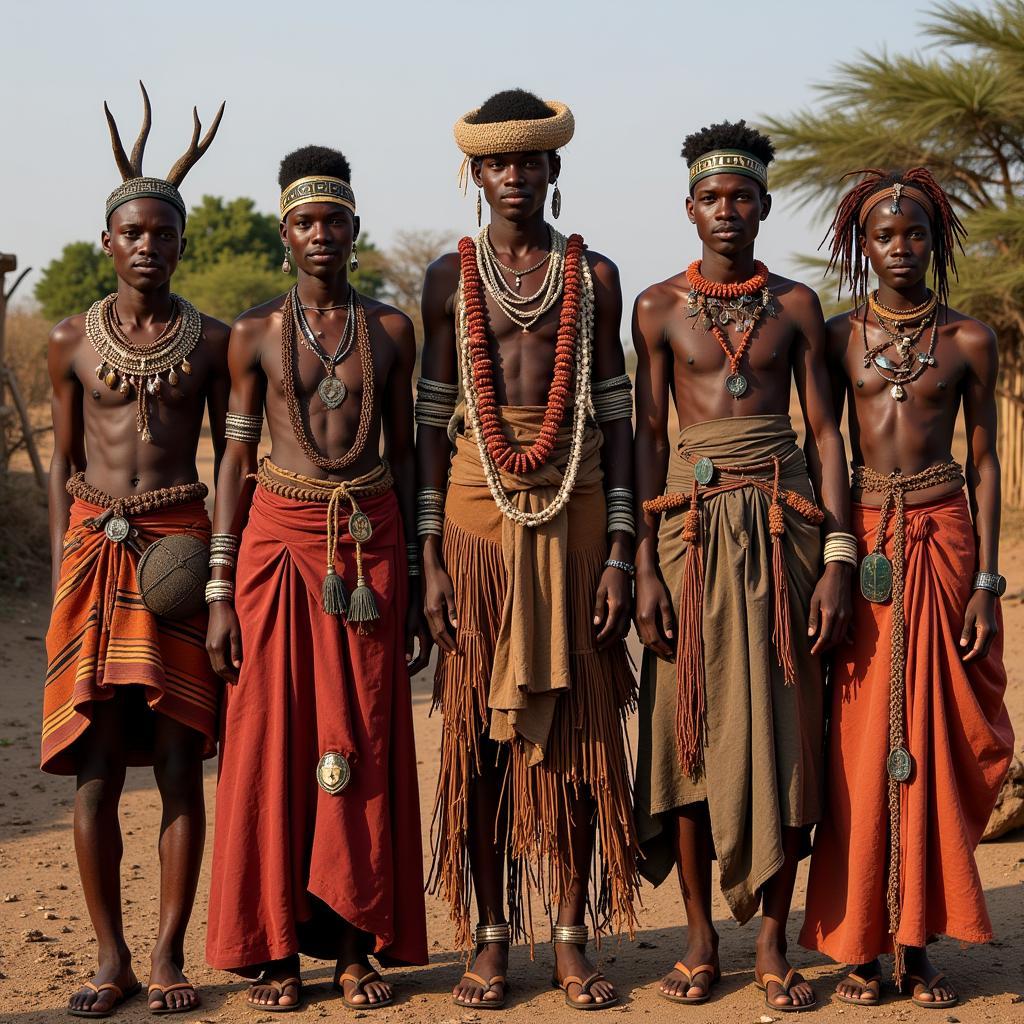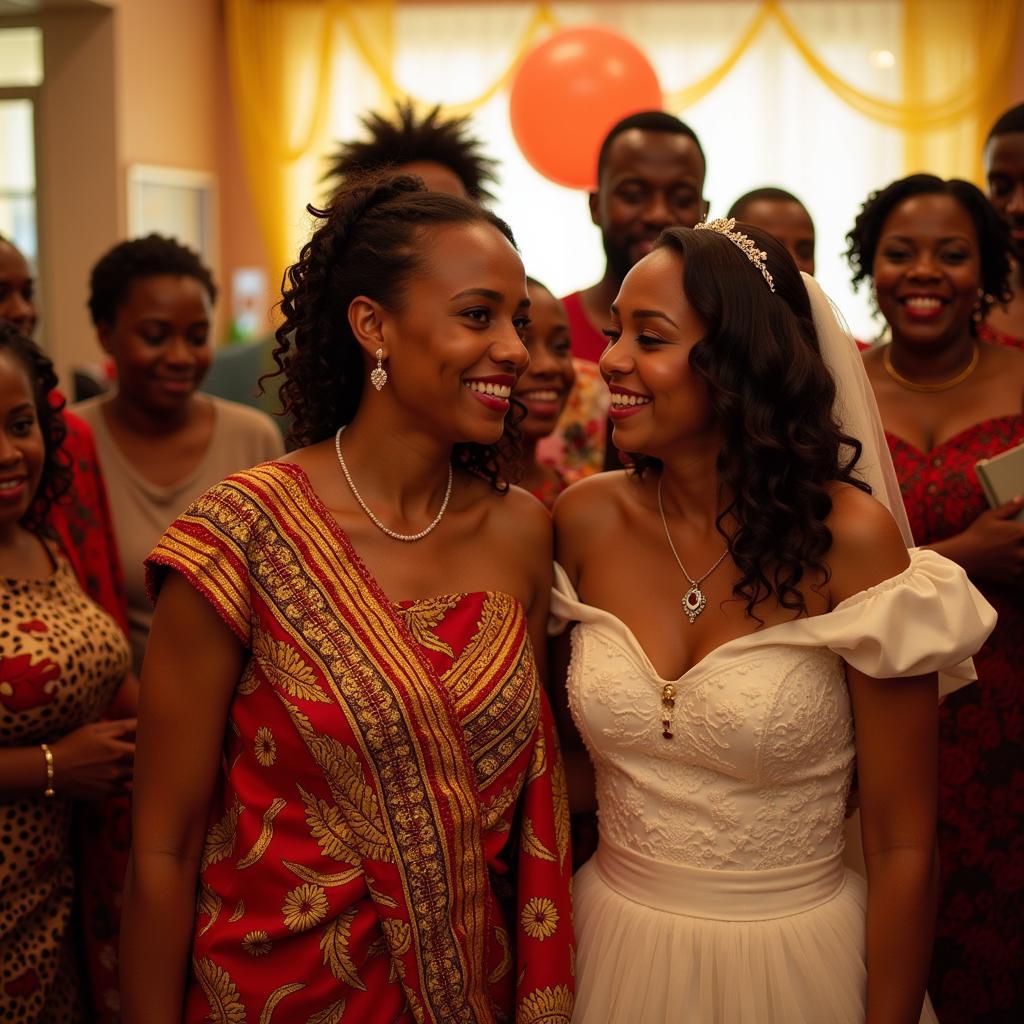Exploring the Depths of African Art Symbolism
African art is more than just aesthetically pleasing; it’s a language, a narrative woven into the very fabric of the continent’s diverse cultures. To truly appreciate African art, we must delve into the intricate world of African art symbolism. From the Adinkra symbols of West Africa to the intricate beadwork of the Maasai, every line, shape, and color choice speaks volumes about the beliefs, values, and stories they hold.
Unmasking the Meanings: Common Symbols in African Art
Many recurring motifs in African art hold universal meanings across different cultures. Animals, often seen as spiritual guides, figure prominently. For instance, the lion, often signifying strength and leadership, appears in various forms, from majestic sculptures to intricate masks. The graceful antelope embodies agility and femininity, while the wise elephant often represents wisdom and longevity.
Beyond the animal kingdom, abstract patterns and geometric shapes also carry significant weight. Spirals, commonly found in pottery and textiles, represent growth, continuity, and the journey of life. Concentric circles might symbolize unity and community, while triangles can represent fertility and the interconnectedness of life.
More Than Meets the Eye: The Role of Color and Material
The use of color in African art is rarely arbitrary. Bold and vibrant hues are not just visually striking but often hold specific cultural connotations. For example, red, a powerful color in many African cultures, can symbolize blood, sacrifice, but also life and vitality. Gold, often associated with royalty and spiritual power, frequently adorns masks and sculptures used in rituals and ceremonies.
The choice of materials is equally significant. Wood, a living, breathing element, is frequently used for masks and figures, reflecting the deep connection to nature present in many African cultures. Bronze, often used for elaborate sculptures, speaks to mastery over metalwork and the enduring legacy of craftsmanship.
 Maasai woman adorned with intricate beadwork
Maasai woman adorned with intricate beadwork
African Art Symbolism: A Window into Cultural Heritage
Understanding African art symbolism is crucial to appreciating the richness and depth of African culture. These symbols are not merely decorative; they are the threads that weave together history, spirituality, and daily life. They offer us a glimpse into a world where art is not just admired but lived, where every object tells a story, and every symbol holds a piece of cultural wisdom.
Frequently Asked Questions about African Art Symbolism
1. What does the color black symbolize in African art?
Black often represents mystery, the unknown, and the spiritual realm. It can also symbolize power, authority, and age.
2. Are there specific symbols for good luck or protection?
Yes, many symbols are believed to bring good fortune or ward off evil. For example, the “Adinkra” symbol “Aya” (fern) represents resourcefulness and endurance, often used as a talisman for protection and strength.
3. What is the significance of masks in African art?
Masks often play a vital role in rituals, ceremonies, and dances. They can represent ancestors, deities, or even abstract concepts and are believed to embody the spirit of the being they depict.
4. How can I learn more about specific symbols and their meanings?
Resources such as museum websites, academic journals, and books specializing in African art can provide in-depth information on specific symbols and their cultural context.
5. Is it appropriate to use African art symbols in contemporary design?
It’s crucial to approach the use of cultural symbols with sensitivity and respect. Avoid appropriating or misusing symbols. Research their meanings and consult with cultural experts to ensure respectful and accurate representation.
Need further assistance understanding the captivating world of African art symbolism? Contact us at +255768904061, kaka.mag@gmail.com or visit us in Mbarali DC Mawindi, Kangaga, Tanzania. Our team is available 24/7 to answer your questions. Explore our website for more fascinating articles about African culture and art.



